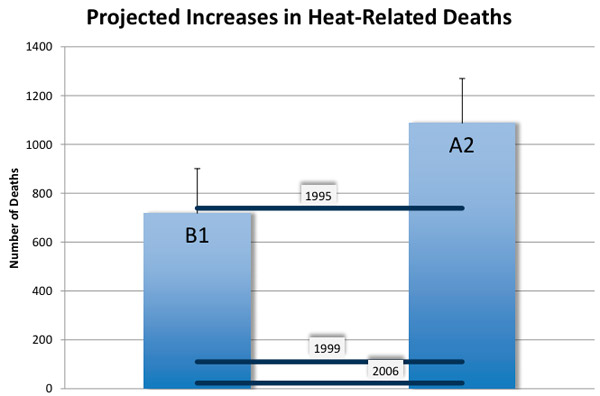The latest National Climate Assessment was released today (PDF) in public-comment-draft form, predicting a two- to four-degree increase in U.S. temperatures in the short run, and even more in the long run:
That means we can expect to see more "extreme weather events," according to the report, such as heavy precipitation — particularly in the Northeast and Midwest — and intense Atlantic hurricanes. Other parts of the U.S. will experience heat waves and droughts, especially in the West.
By 2100, U.S. temperatures are projected to rise 3 to 5 degrees, under the most optimistic estimates — and 5 to 10 degrees if global greenhouse gas emissions continue to increase.
What's in store for Chicago? More frost-free days for your kids or grandkids (2070-2099), around a month's worth:
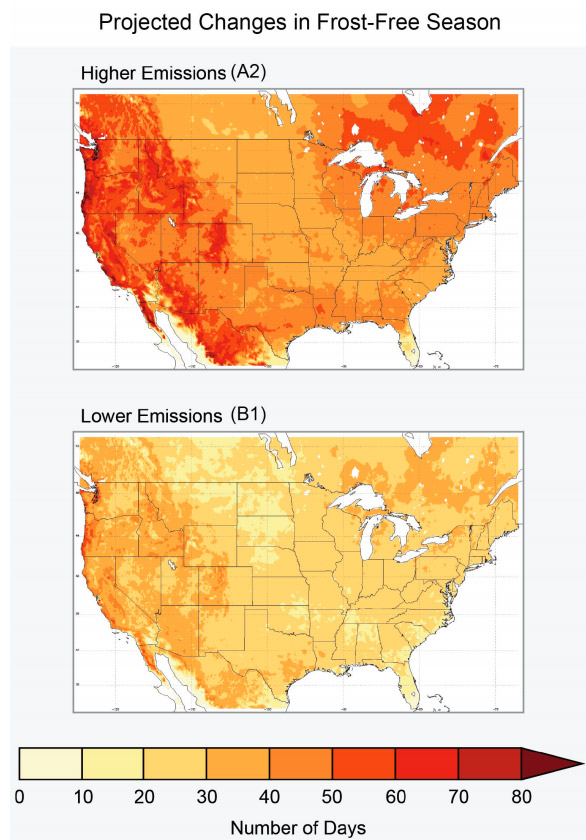
Higher temperatures, depending on the level of emissions through 2050 (RCP 2.6 is a 70 percent cut, RCP is continued current emissions, and the other two are in between):
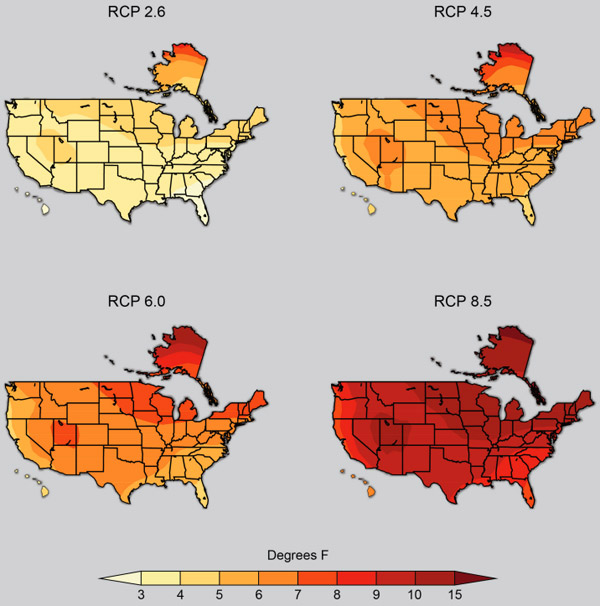
Wet winters and springs:
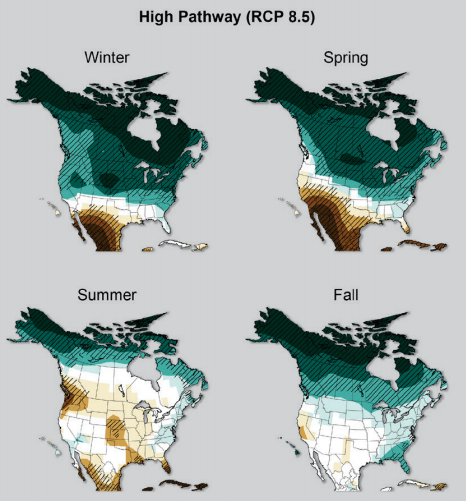
Warmer coldest days of the year, warmer hottest days of the year ("rare events," in this context, means "those having a 5% chance of occuring during any given year," so that "bitter cold winter days will be much less frequent across most of the contiguous U.S.").
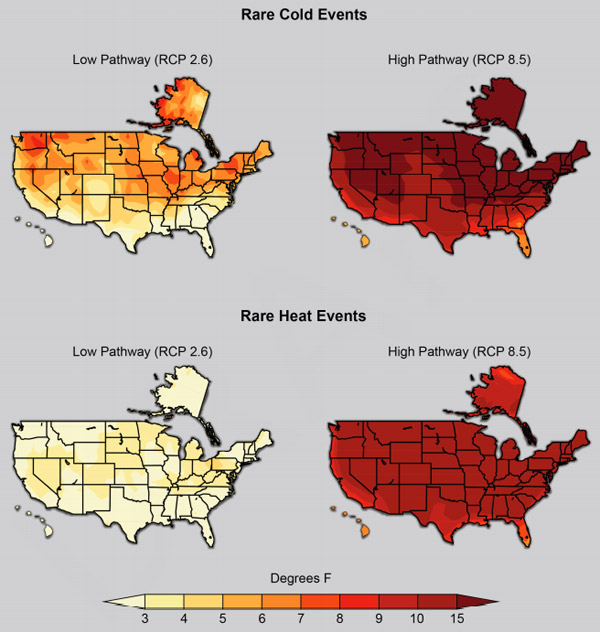
The high-pathway (assuming current emission trends) prediction for rare heat events is worrisome, because the worst natural disaster of the 20th century in Chicago was the 1995 heat wave. Expressed as a regional averge, the number of days over 100 degrees is expected to increase:
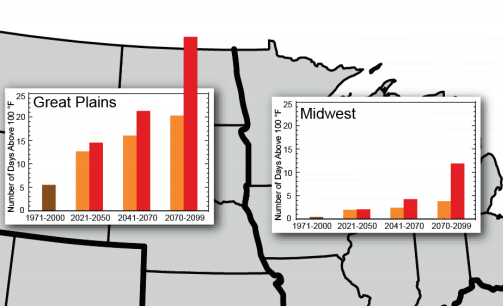
By comparison, Chicago's three straight days of 100-degree temperatures this summer was the first time it had happened in 65 years. At one point the report actually focuses on Chicago, with a projection of heat-related deaths per year under two different scenarios (emission reduction and continuation of increase), compared to recent heat waves:
